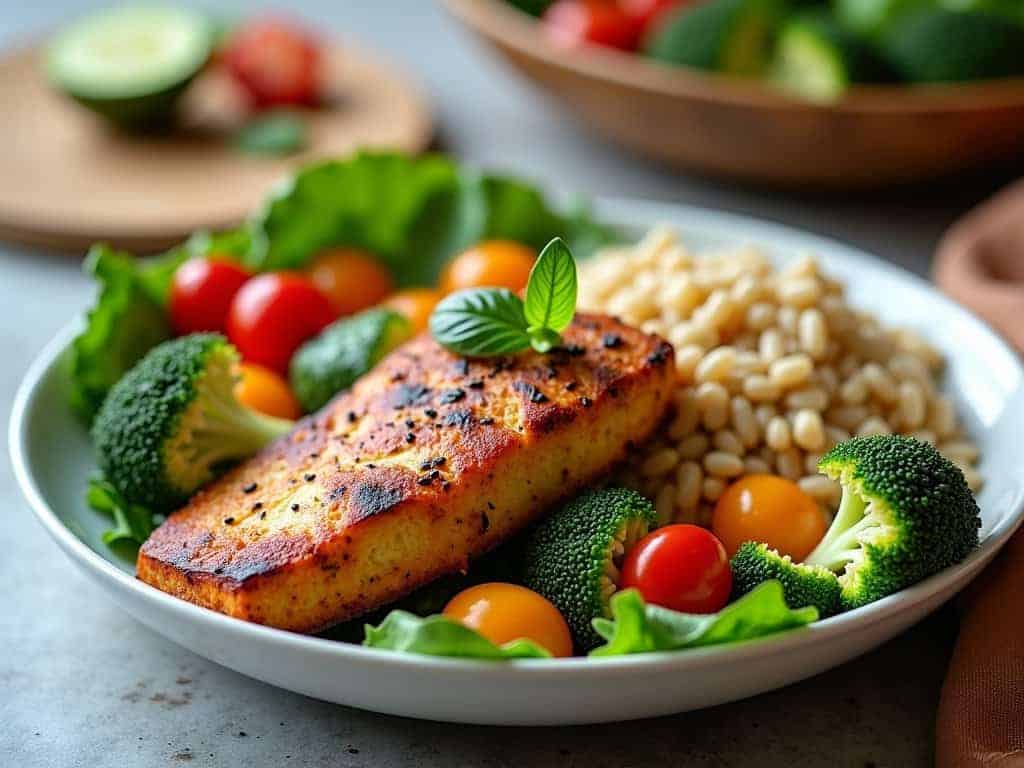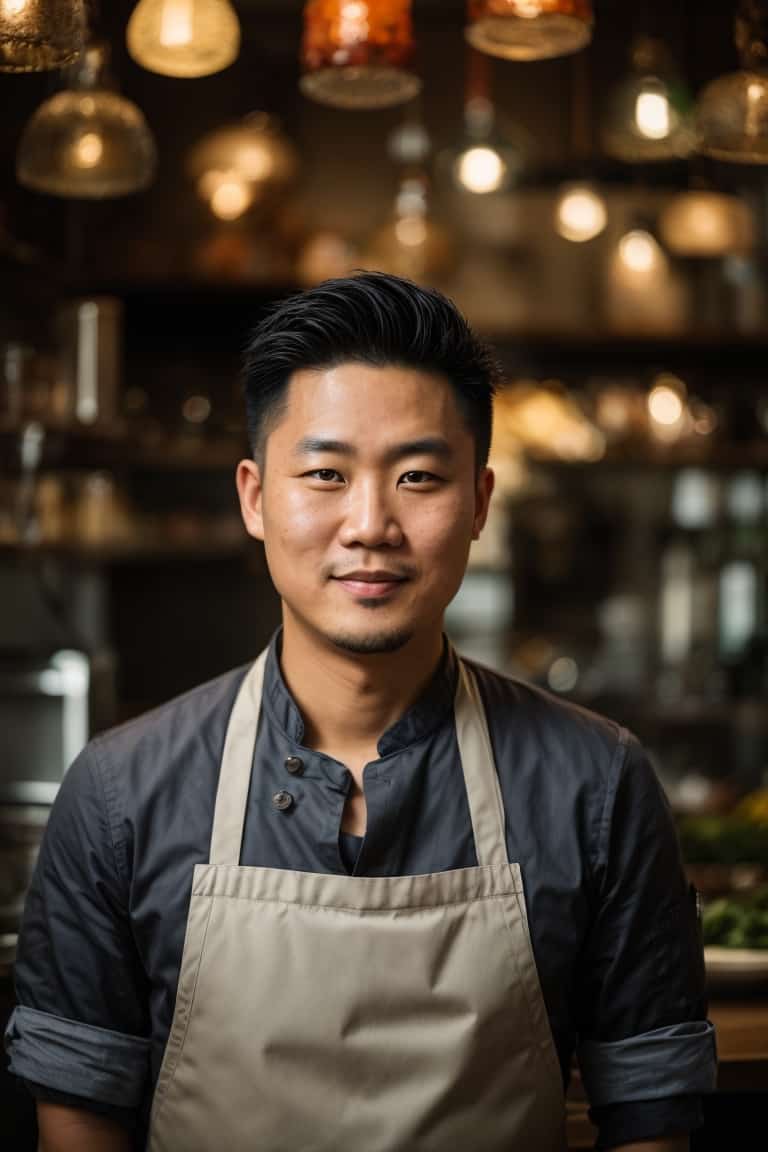Key Highlights
- Culinary diversity: In Brazilian cuisine, different cultural influences merge to create a vibrant variety of flavors from European, Indian, African and Asian traditions.
- Regional specialties: From the hearty stews of Minas Gerais to the spicy seafood of Bahia, each region of Brazil offers unique dishes that reflect their local culture and history.
- Special dishes: Enjoy the richness of Brazilian cuisine through iconic dishes such as feijoada, moqueca and churrasco, all of which are a popular part of Brazil’s culinary identity.
- Street food culture: Immerse yourself in Brazilian street food with dishes such as acarajé, coxinhas and pão de queijo, which reflect the delicious complexity of Brazil’s regional and migrant influences.
- Sweet treats: Enjoy delicious Brazilian desserts such as brigadeiros and beijinhos, whose irresistible flavors make them a staple of celebrations.
- Authentic drinks: Refresh your palate with traditional Brazilian drinks such as caipirinha and guarana, which enhance the culinary experience with their distinctive, refreshing taste.
Introduction
Welcome to my kitchen, or rather, to the story of how I fell in love with Brazilian cuisine, it’s a bit like entering a carnival. Think back to the last time you really had an adventure. Maybe it was something as simple as trying a new dish at that little restaurant your friend always raved about. For me, it was when I plunged my fork into the heart of Brazil’s central region — Cuiabá, Brasília and Belo Horizonte. Trust me, this trip is as tasty as it gets.
I was strolling through the streets of Belo Horizonte, a vibrant city buzzing with life and smelling of delicious street food. There I met Luisa, a local vendor with a smile as infectious as the samba rhythm. She handed me a plate of pão de queijo — those little cheese sandwiches that melt in your mouth — and said: “This, my friend, taste best when it is fresh!”

Brazilian food is an emotional experience. There is joy, like the first time I tasted acai in Cuiabá. The berries were so fresh, the flavor so intense, as if the Amazon itself was waking up my taste buds. And then there’s the frustration when you try to recreate the complex flavors of the feijoada at home. You realize that some dishes are not so easy to recreate.
Speaking of which, did I mention Brasília? The city’s culinary scene reflects its architectural splendor — bold, inventive and simply beautiful. While eating in Brasília, I learned that Brazilian cuisine is really diverse with each dish telling a story of European, African and indigenous influences and Brazil’s complex history.
As my new found friend Luisa said as we shared a cold caipirinha under the setting sun: “Food brings people together. It turns strangers into friends.” Whether eating together or sharing stories from faraway lands, food has the unique power to bridge divides and heal souls.
Discover the diversity of Brazilian cuisine
After my insightful encounter with Luisa in Belo Horizonte, my journey took me north to Bahia, where the air is as spicy as the cuisine. In Bahia, each meal feels like a feast, infused with the rhythms of African drums and the heat of the tropical sun.
I remember a small, colorful restaurant in Salvador, the heart of Bahia, where I was introduced to acarajé. Maria, the cook, a woman with hands as nimble as a painter, described it as “the soul of our state on a plate” Acarajé, these golden balls of pea batter, crispy on the outside and soft on the inside, were filled with spicy crab that crunched with each bite. Maria explained to us that this dish is a blend of the African heritage of the slaves who were brought to Brazil and the indigenous ingredients they adopted. The meal felt like a history lesson, as each layer told a story of resilience and adaptation.

From Bahia, my journey took me south to Minas Gerais, where the food is as simple and hearty as the people themselves. In Minas, the culinary traditions reflect the rugged landscapes and the history of mining. There I met João, a local farmer, who introduced me to feijão tropeiro. Over a meal, he explained to me: “This dish used to feed the miners and travelers — a mixture of beans, bacon and cassava flour that keeps for a long time.” As we ate, the rustic flavors of feijão tropeiro seemed to reflect the stories of the people who mined the earth not only for gemstones, but also for a living.

Brazil’s vast geographic expanse, from the lush jungles of the Amazon to the expansive coastlines, has shaped the country’s food in profound ways. In the coastal state of Pará, I entered a market that smelled of fresh fish and spices. Fish and seafood are a way of life that is as important as the air we breathe. I tasted a fish stew that had the essence of the sea and was flavored with herbs from the depths of the Amazon that I had never heard of.
So my journey through Brazil’s culinary landscape is all about understanding the stories behind each dish and seeing Brazil through the eyes of the chefs.
Brazilian specialties that you must not miss
On my culinary journey through Brazil, I came across dishes that seemed to capture the essence of the country. Each region brought its own specialties to the table, making each meal a journey of discovery through the flavors that make up Brazil.
There’s nothing better than sitting at a table with new friends in a cozy restaurant in Rio de Janeiro, the lively chatter filling the air as well as the aroma of slow-cooked stew. The feijoada with black beans and pork is served in a large pot that tastes rich and inviting.

Eduardo, the restaurant owner and my guide to this iconic dish, explains: “Feijoada is the heritage of our ancestors, a dish born out of necessity but celebrated for its flavor.” I can’t quite understand what he’s saying, but a few others nod silently. He serves it traditionally with rice, crispy farofa, tangy orange slices and a pile of sautéed cabbage.
Next, I get carried away by the coastal charm of the moqueca. In Salvador, the smell of the sea is never far away and moqueca embodies this maritime richness. This fish stew is cooked in a traditional clay pot and combines the sweetness of the coconut milk with the strength of the palm oil that coats the fish and seafood.

The locals are proud of this dish, which varies from state to state — Moqueca Baiana with its strong flavors and the milder but equally delicious Moqueca Capixaba from Espírito Santo. As I sat in a beach café, watching the waves and savoring each spoonful, the flavors seemed to dance on my palate – a perfect blend of land and sea.
When I ventured to the southern plains of Brazil, where gaucho culture is rife, I was greeted with the sight of large skewers of meat being roasted over an open fire. At a local churrascaria in Porto Alegre, I was able to admire the skill of the churrasqueiro as they expertly tended the flames. Every piece of meat, from picanha to alcatra, was cooked to perfection, offering a smoky, succulent experience that is the hallmark of Brazilian barbecue. “Do you need more churrasco? I can’t stop eating this,” a friendly local named Carlos told me as he handed me another skewer.

The art of Brazilian street food
As I continued to meander through the streets of Brazil, each corner and every market I visited brought me closer to the pulse of Brazilian street food. The variety is breathtaking. Here, between the chatter of locals and the clatter of pots and pans, the true flavor of Brazil comes alive.
In Bahia, the spirit of the streets is embodied by the sizzle of acarajé as it hits the oil. These black-pea dough balls filled with prawns and spices are a cultural symbol with African heritage. The Baianas in their traditional white cotton dresses and headscarves are masters at this craft. It was a spectacle to watch one of them, Ana, artfully shape and fry each acarajé before dipping it in a glowing palm oil sauce. The crispy exterior of the acarajé, followed by the spicy prawns inside — each acarajé told the story of Bahia’s multicultural diversity.


In the south, in São Paulo, the scene switched from the African influences of the north to Portuguese-inspired appetizers such as coxinhas. In a small, cozy café on a busy street in São Paulo, I bit into one of these tear-shaped delicacies. The crust crackled under my teeth, revealing a delicate mixture of chicken and cod inside. Eduardo, the owner of the café, explained to me that “coxinha” means ‘little thigh’ in Portuguese, named after its shape”. He served it with a squeeze of lime, which lifted the richness and made each bite as refreshing as it was delicious.
But no street food tour is complete without Minas Gerais, where the Pão de Queijo plays the starring role. At a market in a small town, I followed the tantalizing aroma of baked cheese to a stall with baskets of these warm, golden balls. The vendor, a jovial woman named Clara, insisted that I try one straight from the oven.

The outside was slightly crispy, giving way to a chewy, airy center that exuded the flavors of local cheese. “It’s a simple food,” Clara said, “but it’s our heart,” making a heart sign with her hands. As I stood there munching on the Pão de Queijo, surrounded by locals enjoying their morning coffee, I felt a deep sense of home and place.
Brazilian sweets and desserts
In a cozy corner of a lively café in Rio de Janeiro, I met my first brigadeiro. The café was small and inviting, with colorful decorations that reflected the vibrancy of the sweets on display. As I bit into the brigadeiro, the chocolatey exterior gave way to a gooey, rich center that seemed to melt right into my soul.

Sofia, the owner, explained to me with a proud smile, “Our brigadeiros, big or small ones, are always sold out. You’re lucky.” As I watched families and friends gather around the tables to share these delicacies, I understood why brigadeiros are often referred to as the heart of Brazilian sweets. Behind their simplicity lies the power to bring people together.


Just when I thought I had tasted all the splendor of the sweets, beijinhos — or ‘little kisses’ — arrived at my table. These coconut-flavored treats were just as delicious. As I savored the creamy texture and subtle hint of cloves, Sofia explained, “Beijinhos are like a sweet kiss goodbye at the end of a party.” The way the coconut enveloped the sweetness reminded me of the Brazilian talent for combining simple ingredients into something absolutely magical.
I also tried other traditional desserts such as pão de mel and quindim. The pão de mel, a honey cake dipped in chocolate, offered a comforting spice that perfectly balanced the sweetness and reminded me of warm, festive evenings.


The quindim, with its glistening golden top and rich custard base, exemplified the Brazilian love of eggs and coconut. Each dessert told of regions and stories, from the cocoa fields of Bahia to the sugar cane-covered hills of São Paulo.
Brazilian soft drinks
My immersion into the essence of Brazil wouldn’t be complete without learning about its vibrant beverage culture. After sampling the sweet and savory delights of Brazilian cuisine, I was drawn to the refreshing world of Brazilian drinks, each with its own story to tell.
On a sunny afternoon in Rio de Janeiro, with the famous Copacabana beach as a backdrop, I tasted the national cocktail Caipirinha for the first time. The drink with its sharp limes balanced out the sweetness of the sugar, which was intensified by the strong cachaça. As Lucas, the bartender, carefully mixed the drink, he explained: “The Caipirinha is simply a cocktail that is perfect for exuberant celebrations or a quiet sunset.” The icy concoction was refreshingly fizzy and each sip put me more in the festive Brazilian mood.

From the beaches, I headed into the heart of São Paulo, where the lively markets offered another staple drink: Guarana. This lemonade, which comes from the depths of the Amazon, piqued my curiosity with its bright red label and exotic taste. The first fizzing sip revealed a flavor that was both sweet and slightly bitter, reminiscent of the great biodiversity of the Amazon rainforest. “Guarana is an energy boost from our beloved rainforest,” said Lucia, a local saleswoman, as she handed me a cold bottle.
In addition to these popular drinks, I also discovered the simpler but no less satisfying Caldo de Cana. Watching a vendor press sugar cane at a hot, dusty roadside stall was an excellent example of Brazilian ingenuity. The sweet and refreshing juice offered a quick respite from the heat and epitomized the richness of Brazilian agriculture.

I drank a variety of fruit juices on my trip, from the tangy sweetness of maracujá (passion fruit) to the creamy richness of coconut water.
The culture of Brazilian meals
One of my fondest memories of this trip is of a morning in a café in São Paulo. The Brazilian breakfast, or “café da manhã” as it is affectionately locally known. The table was laden with fresh tropical fruits — pineapple, mango and papaya — each slice bursting with juice and glowing like the morning sun. Next to it was pão de queijo, the cheese bread with its oven-warm, crispy exterior gives way to a soft, cheesy center, making every bite a delight. The strong, aromatic coffee served with it was the perfect accompaniment, awakening the senses and setting the mood for the day.
But it was at family meals that the true spirit of Brazilian cuisine unfolded. In a small neighborhood in Rio, I was invited to a family dinner, a tradition where the simple act of eating turns into a lively celebration of flavors and camaraderie. The dinner table was set with local staples — fluffy rice, creamy beans and tender cassava. Each dish was passed around with a smile, also talking and laughing, weaving a web of family ties.

The centerpiece was the feijoada, a dish steeped in history and served on special occasions. As we gathered around the pot of black beans and various types of pork, the host explained: “Feijoada is like our national dish, bringing together ingredients and people alike.”
Dinner reflected this sense of unity. Whether it was grilled meat or freshly caught fish, Brazilian meals focused on the shared experience rather than individual portions. This communal eating, which is inherent to Brazilian culture, fosters a sense of belonging and joy that lasts long after the plates have been cleared.
Vegetarian and vegan options in Brazil
In the heart of São Paulo, tucked away in a busy street with vibrant murals, I came across a small café with a menu dedicated to plant-based Brazilian cuisine. The owner Maria, a passionate advocate of sustainable eating, introduced me to a world where tropical fruits and root vegetables are the stars. “We Brazilians love our meat, but there is also a growing appreciation for the diversity of plants our country has to offer,” she explained, as she served a dish that was as much a feast for the eyes as it was for the palate.
The dish consisted of a colorful arrangement of hearts of palm, grilled and seasoned to perfection, served alongside a spicy black bean stew and a variety of local vegetables such as peppers and tomatoes. Maria shared how cooks across Brazil transform ingredients like cassava into crispy deep-fried French fries or rich, fluffy breads that round out any meal.


Even more impressive was the creative use of cassava that I saw in countless variations. In one dish, cassava flour was made into farofa, which was roasted with garlic and onions to create a crunchy, savory counterpart to a spicy vegetable moqueca. Slow-cooked to release the flavors of tomatoes, onions and coconut milk, the moqueca shows how rich vegetarian cuisine can be.
As I traveled further north, the tropical richness of Brazil became even more apparent. In a small town near Salvador, a local market offered a dizzying array of fruits such as mangoes, papayas and passion fruit, all bursting with natural sweetness. Here I enjoyed a refreshing salad with creamy avocado chunks and a tangy passion fruit dressing that showcased the versatility of Brazilian produce.
Conclusion
At the end of my journey through Brazil, I take with me not only memories of delicious dishes, but also the laughter and stories we shared over countless meals. Whether I was spooning feijoada at a tiny table in Rio or nibbling acarajé at a street festival in Salvador, every bite brought me closer to the true soul of this vibrant country. The people I met, who presented each dish with pride and joy, showed me that food really does bring people together here. It was a delicious reminder of the simple pleasures that food can bring, spiced with Brazilian spirit.

Frequently asked questions
What makes Brazilian cuisine so unique?
Brazilian cuisine is unique due to its diverse influences, unique ingredients and rich culinary traditions. The fusion of European, Indian, African and Asian flavors creates a vibrant and diverse national cuisine. Regional differences also contribute to the uniqueness of Brazilian cuisine, as each state offers its own specialties and traditional dishes.
Can I find authentic Brazilian dishes outside Brazil?
It’s more difficult to find authentic Brazilian dishes outside of Brazil, but in larger cities with many immigrants, there are often Brazilian restaurants that offer traditional dishes. In the United States, for example, Brazilian cuisine is becoming more common, so you can enjoy authentic dishes without leaving the country. In addition, Brazil’s global presence and cultural influence have made Brazilian cuisine popular in different parts of the world.
Tips to enjoy Brazilian food like a local
To enjoy Brazilian cuisine like a local, you should immerse yourself in the country’s culture and traditions. Visit the local markets to discover the freshest ingredients and traditional practices. Taste the food on the street to get an authentic taste of the local flavors. Immerse yourself in the culture by learning about the history and traditions of Brazilian dishes. And most importantly: enjoy the taste of the local ingredients and the passion that goes into every dish.
Are there any special ingredients that are commonly used in Brazilian cuisine?
Yes, there are some unique ingredients that are used in Brazilian cuisine. Cassava flour, also known as cassava flour, is a main ingredient used in various dishes. Palm oil and palm kernels are widely used in Brazilian cuisine and give dishes a special flavor and texture. These indigenous ingredients contribute to the unique and varied flavors of Brazilian dishes.
Can you recommend any Brazilian desserts or drinks that people should definitely try?
Definitely! Try brigadeiros, a chocolate-like treat, and Romeu e Julieta, a combination of guava paste and cheese. When it comes to drinks, don’t miss out on the caipirinha, Brazil’s national cocktail, and passion fruit juice. These delicacies are a testament to Brazil’s tropical flavors and vibrant culinary scene.








